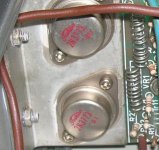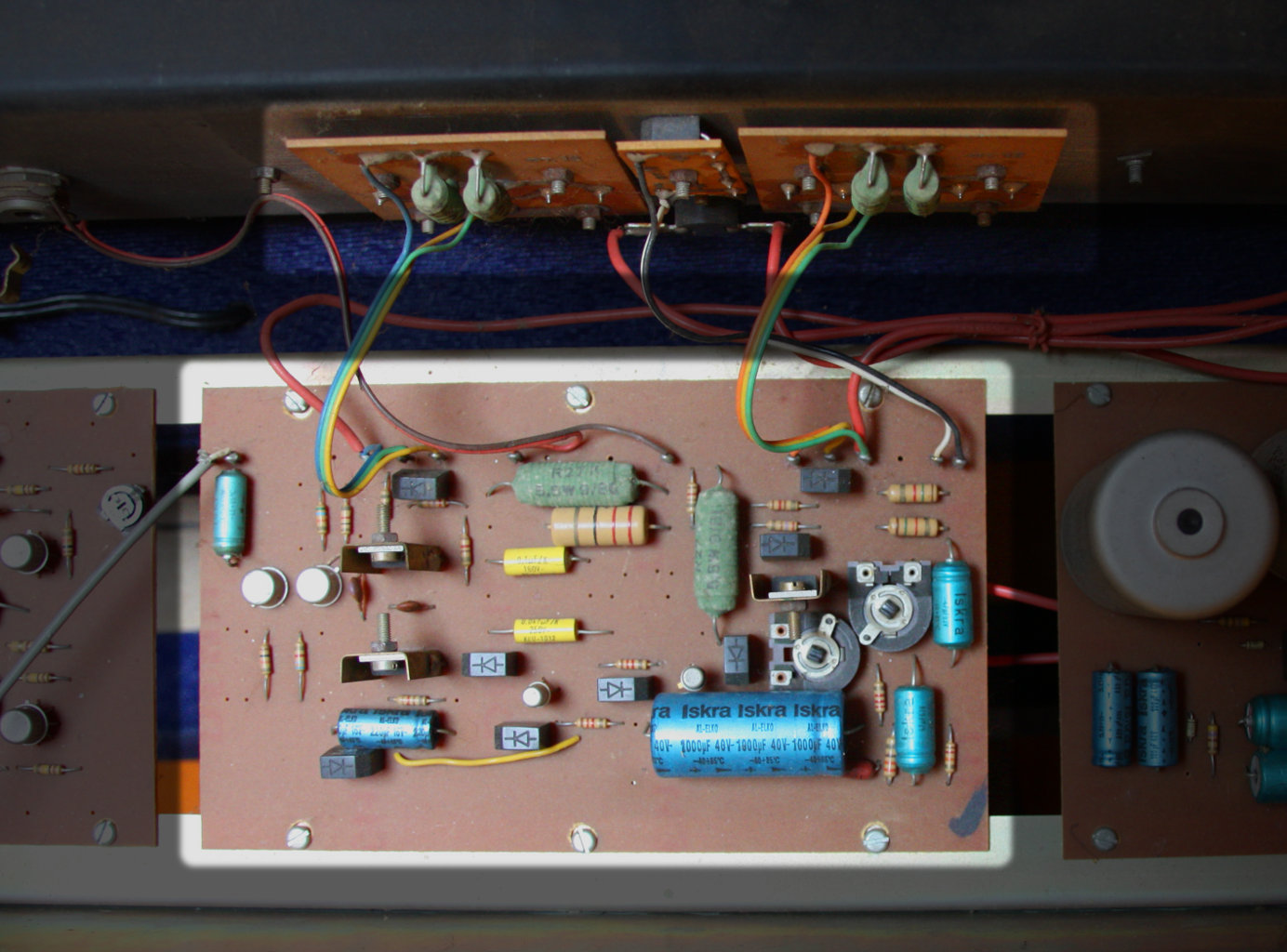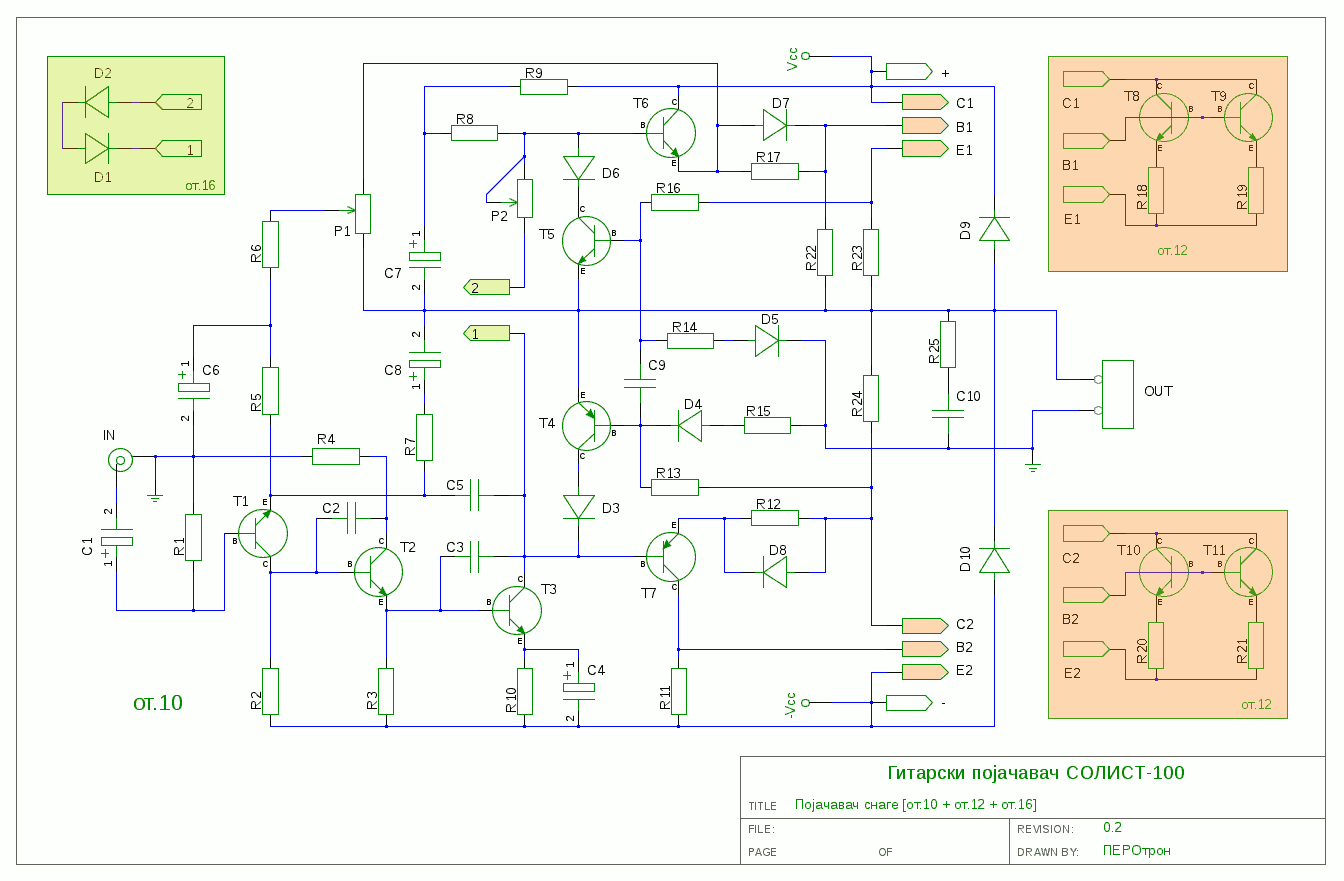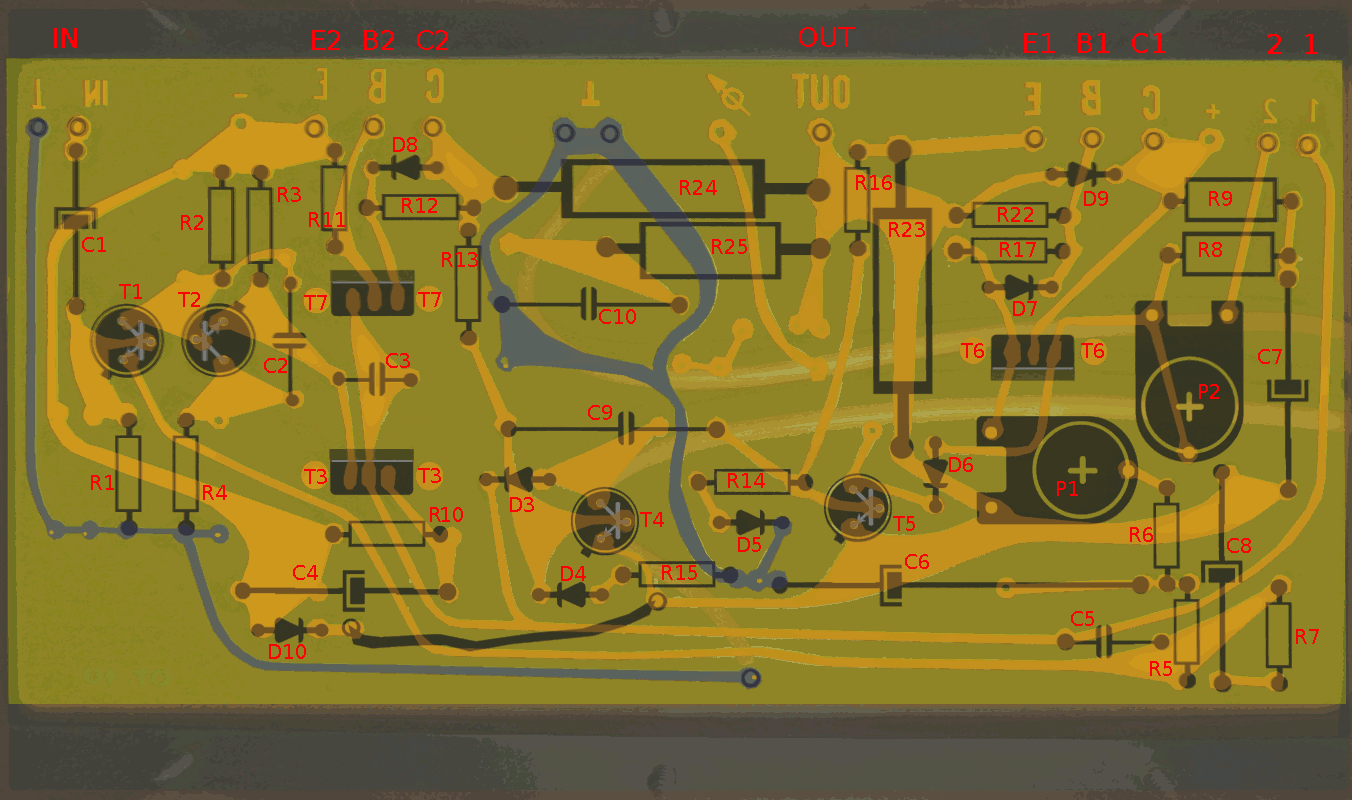Hi tiefbassuebertr,
Looked through several RCA HamTips and only the power supply mentioning 2N3053-2N3054-2N3055 refers to those transistors! And then it says "recently introduced", so we are looking for an advert around 1964 or possibly early 1965.
Have to keep looking. John
Thank you John. Maybe in one of the magazines mentioned about
http://www.diyaudio.com/forums/soli...rrently-available-electr-audio-magazines.html
e. g. MJ magazine
Thank you for this short form data overviews. Are there also datas in the kind of those from follow URL?Tiefbass
Here is document with that vintage Tesla SS parameters for you :
Must check for that old electronics magazines , they exist here for sure , but I need some time to recheck all that !
BTW , I support all your efforts & work here on this BIG DIY Audio site !!!
Best Regards !
http://www.onsemi.com/pub_link/Collateral/MJ21193-D.PDF
Maybe Tesla datasheets and databooks are only available in the native language - thus I don't know the right keywords for google.
I think the Czechia members and those from Slovakia and Poland/Russia can check out this.
Let's take your time for recheck that - it is not very much for me.
Last edited:
I tried, but can't find all of the documents. What I can find out is this:Nobody can check out this for me?
Homotaxial 2N3055 can't be directly replaced by modern production Epitaxial 2N3055 since they are far different. However, 1300pF 1MHz Homotaxial 2N3055 could be replaced by 1000pF 2MHz Epitaxial MJ15003, MJ802, MJ15001, which are sturdy, slow, high noise, high capacitance, high current devices. This sort of thing is suitable for repairs of Class A or high bias amplifiers.
thank you for this advices.I tried, but can't find all of the documents. What I can find out is this:
Homotaxial 2N3055 can't be directly replaced by modern production Epitaxial 2N3055 since they are far different. However, 1300pF 1MHz Homotaxial 2N3055 could be replaced by 1000pF 2MHz Epitaxial MJ15003, MJ802, MJ15001, which are sturdy, slow, high noise, high capacitance, high current devices. This sort of thing is suitable for repairs of Class A or high bias amplifiers.
Are there any news in this case?really? I cannot believe this. The brand logo from Motorola and Matsushita are not identical, but similar.
In the attachement NAD3020 with 2N3055 from various brands.
BTW - to find out the first solid state audio components in general I have start this thread:
http://www.diyaudio.com/forums/soli...id-state-audio-amplifier-components-want.html
But the really first commercial amp (or receicer?), where 2N3055 is in use, is also still wanted.
Toshiba 2N3055 Counterfeit - which real manufacturer ??
By chance I have found this:
Counterfeit transistors -
Hard to believe, that Toshiba was the manufacturer in real world.
By chance I have found this:
Counterfeit transistors -
Hard to believe, that Toshiba was the manufacturer in real world.
after seeing many counterfeits, i doubt it was actually toshiba. i don't think toshiba actually made any devices with 2N part numbers
Toshiba did make 2N numbered TO3 transistors
Yes, here's a 35 year old pair of Tosh 2N3773
Attachments
ok, didn't think they did, but i guess they actually did make some.... i'll make a note of that.... those look like steel covers on a steel heat spreader... not aluminum covers.... i'm keeping track of such details
and, yes the toshiba logo is script not block letters....
and, yes the toshiba logo is script not block letters....
Last edited:
Just to show that the 3055 can work well for audio, here's a pair of new amplifiers with 3055's (and similar!).
Not currently in production, as far as I know.
Tringlophone, Class A, from Elvee

Tringlophone can use most output devices--the compensation will merely roll back a modern output device to approximately a 3055 speed anyway. There's no switching going on in class A, so really, the spec to look for in an output device for it, is linearity, such as the highly linear MJ21194.
And then. . .
Here's another new 2N3055 amplifier.
Circlophone, Class aA, from Elvee
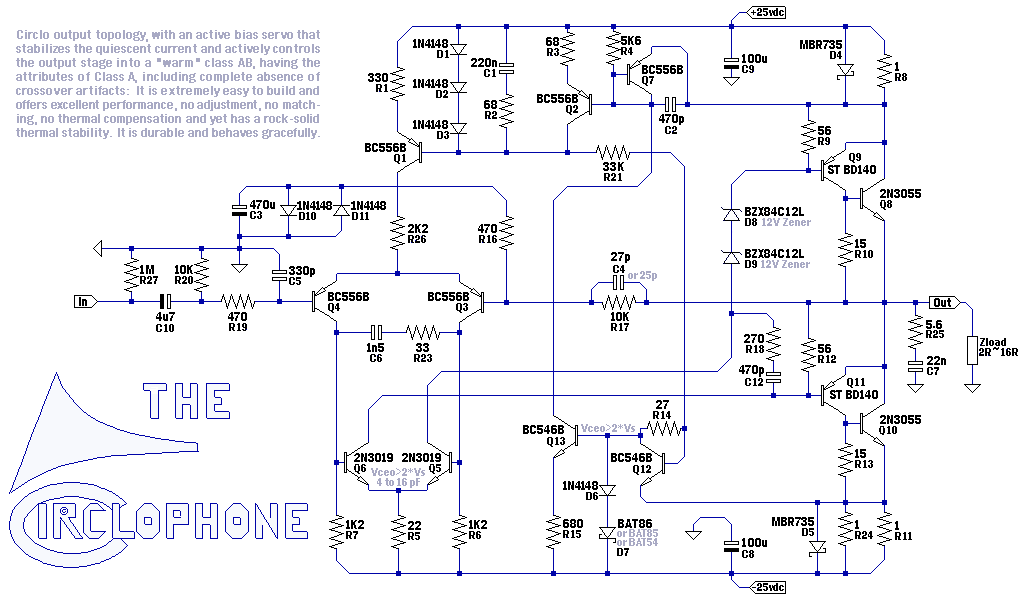
Circlophone can use classic output devices of days gone by (modern equivalents of the classics are MJ802, MJ15001, MJ15002), or it can use more MJL21194, or it can use a much faster output device if when capacitance is added, C11, like this.
Circlophone was the first sliding bias Class A amplifier made adaptable to state of the art Class aAG (by adding two published mods that use a transistor each, and add the variable supply). That is a cell phone tower technology not yet used for linear audio. However, the two mods have been used to prevent rail voltage fluctuations from interposing a signal on the audio. One of these mods replaces the bias setting resistor with a CCS and the other mod replaces the zeners. After that, one could use the circlo with a variable supply, flimsy rails, or a Class G tracking power supply.
Elvee has BD249C on his personal Circlophone amplifier (although it was tested and measured with 3055's in place).
Several Circlophones have been built with classic output devices from junk boxes and likewise highly satisfactory circlos have been built with the MJ15003, the modern day equivalent of a classic output device.
This amplifier has tracking instead of switching, so really any sturdy and reasonably linear output device suits it.
Got some classic outputs that need employed? Try the circlo. The dynamics are a bit wild, so you won't get bored.
Not currently in production, as far as I know.
Tringlophone, Class A, from Elvee

Tringlophone can use most output devices--the compensation will merely roll back a modern output device to approximately a 3055 speed anyway. There's no switching going on in class A, so really, the spec to look for in an output device for it, is linearity, such as the highly linear MJ21194.
And then. . .
Here's another new 2N3055 amplifier.
Circlophone, Class aA, from Elvee

Circlophone can use classic output devices of days gone by (modern equivalents of the classics are MJ802, MJ15001, MJ15002), or it can use more MJL21194, or it can use a much faster output device if when capacitance is added, C11, like this.
Circlophone was the first sliding bias Class A amplifier made adaptable to state of the art Class aAG (by adding two published mods that use a transistor each, and add the variable supply). That is a cell phone tower technology not yet used for linear audio. However, the two mods have been used to prevent rail voltage fluctuations from interposing a signal on the audio. One of these mods replaces the bias setting resistor with a CCS and the other mod replaces the zeners. After that, one could use the circlo with a variable supply, flimsy rails, or a Class G tracking power supply.
Elvee has BD249C on his personal Circlophone amplifier (although it was tested and measured with 3055's in place).
Several Circlophones have been built with classic output devices from junk boxes and likewise highly satisfactory circlos have been built with the MJ15003, the modern day equivalent of a classic output device.
This amplifier has tracking instead of switching, so really any sturdy and reasonably linear output device suits it.
Got some classic outputs that need employed? Try the circlo. The dynamics are a bit wild, so you won't get bored.
The point of post#169:
I'm saying that the classic high capacitance output devices work perfectly well in amplifiers that don't make crispy sparky clipper-esque sounds of switching discharging the older device's high parasitic capacitance, and therefore the classic outputs work best in Class A, High-Bias-Ab, Class AA, Class aA and Class aAG. . . but not so well in Class aB (lowercase a indicates low bias) or D (lots of switching).
Question:
If we have, on hand, a new output transistor like MJ21194, 500pF but want to use it to repair an old amplifier with 3055H, 1500pF, can we not just add a 1n capacitor right at the new output transistor to basically mimic an older transistor, like 500p+1n=1500p, so that the new part will plug-n-play easily?
I'm saying that the classic high capacitance output devices work perfectly well in amplifiers that don't make crispy sparky clipper-esque sounds of switching discharging the older device's high parasitic capacitance, and therefore the classic outputs work best in Class A, High-Bias-Ab, Class AA, Class aA and Class aAG. . . but not so well in Class aB (lowercase a indicates low bias) or D (lots of switching).
Question:
If we have, on hand, a new output transistor like MJ21194, 500pF but want to use it to repair an old amplifier with 3055H, 1500pF, can we not just add a 1n capacitor right at the new output transistor to basically mimic an older transistor, like 500p+1n=1500p, so that the new part will plug-n-play easily?
Last edited:
ok, didn't think they did, but i guess they actually did make some.... i'll make a note of that.... those look like steel covers on a steel heat spreader... not aluminum covers.... i'm keeping track of such details
and, yes the toshiba logo is script not block letters....
The covers are taller than average and the top is domed. If I get a reason to go inside that amp I'll get you a better shot.
I did find a mention somewhere on here that the Toshiba 2N3773 was actually a relabled 2SD873.
Member
Joined 2009
Paid Member
Here's another new 2N3055 amplifier.
Circlophone, Class aA
Have you any thoughts on the sound comparison between the JLH 10W Class A and the Circlophone based on 2N3055 outputs ?
The covers are taller than average and the top is domed. If I get a reason to go inside that amp I'll get you a better shot.
I did find a mention somewhere on here that the Toshiba 2N3773 was actually a relabled 2SD873.
if they are genuine toshiba devices (which they look to be) relabeling them from a 2SD number to an equivalent 2N number would have opened up a US military market for toshiba.... one thing about Toshiba is that they have a very comprehensive reliability tracking program, which mirrors reliability programs required for supplying US government contracts.
Yes one, the circlo has better dynamics than anything else, but tringlophone is more accurate. Tringlophone will best that jlh due to power circuit. I had minor tone trouble with my circlo although it did everything else optimally.Have you any thoughts on the sound comparison between the JLH 10W Class A and the Circlophone based on 2N3055 outputs ?
Last edited:
Solist-100
Hi,
Here is "Solist-100" guitar-amp from Melodija Mengesh (YUG).
http://perotron.files.wordpress.com/2012/07/solist-100_v-0-2.png
http://perotron.files.wordpress.com/2012/07/solist-100_v-0-2_razmestaj_sa_oznakama.png
http://perotron.files.wordpress.com/2012/07/solist-100_01.jpg
Any coment 😉
Hi,
Here is "Solist-100" guitar-amp from Melodija Mengesh (YUG).
http://perotron.files.wordpress.com/2012/07/solist-100_v-0-2.png
http://perotron.files.wordpress.com/2012/07/solist-100_v-0-2_razmestaj_sa_oznakama.png
http://perotron.files.wordpress.com/2012/07/solist-100_01.jpg
Any coment 😉
Member
Joined 2009
Paid Member
Yes one, the circlo has better dynamics than anything else, but tringlophone is more accurate.
So even the humble 2N3055 can perform very well.
What makes the circle so dynamic ?
very nice to see the history and age behind some components, since a lot of peoples think they use state of the art , new technics🙂 and respect for the inventor.....
gr richard
gr richard
I am wanting to set up this amplifier for SHURE PA, liked the application NBF, but I'm wanting to use the power voltage + B twice.
Can anyone comment?
http://55d5340a043a828856e1-f62de27...om/user_guide/upload/1294/us_pro_pm300_ug.pdf
Can anyone comment?
http://55d5340a043a828856e1-f62de27...om/user_guide/upload/1294/us_pro_pm300_ug.pdf
- Home
- Amplifiers
- Solid State
- 2N3055 inside - commercial famous amplifier models, quasi complementary power output
